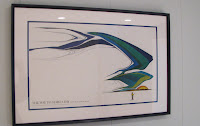Posts
Showing posts from October, 2011
October Theme: Inspiration (but not mine!) by Tracy Barrett
- Get link
- X
- Other Apps
Posted by
Mike Townsend
October Theme: What Inspires Me? by Michael Townsend
- Get link
- X
- Other Apps
Posted by
Lucy Jones
October Theme: Dreaming Inspiration, by Lucy Jones
- Get link
- X
- Other Apps
Shake me and my confidence 'bout a great many things.
- Get link
- X
- Other Apps
Posted by
Stephanie J. Blake
October Theme: The Little Things
- Get link
- X
- Other Apps
Posted by
Dia Calhoun
October Theme: Abandon your Inspiration by Dia Calhoun
- Get link
- X
- Other Apps

Posted by
Holly Schindler
October Theme: The Halfway-Point Inspiration Burst (Holly Schindler)
- Get link
- X
- Other Apps

Posted by
Alan Gratz
October Theme: Inspiration (Alan Gratz)
- Get link
- X
- Other Apps

Posted by
Holly Schindler
GUEST POST: AM I AS SMART AS A FIFTH GRADER…when it comes to cracking codes? (Penny Warner)
- Get link
- X
- Other Apps
Posted by
Lisa Graff
Interview with a Publicist: Jason M. Wells (plus a giveaway!)
- Get link
- X
- Other Apps
Posted by
Sarah Dooley
October Theme: Inspiration (Sarah Dooley)
- Get link
- X
- Other Apps
Posted by
Stephanie Burgis
October Theme: Inspiration (Stephanie Burgis)
- Get link
- X
- Other Apps
Posted by
Bob Krech
October Theme: Inspiration (Bob Krech)
- Get link
- X
- Other Apps

Posted by
Jody Feldman
What Inspiration Looks Like (October Theme Post from Jody Feldman)
- Get link
- X
- Other Apps

Posted by
Tyler Whitesides
October Theme: Inspiration (by Tyler Whitesides)
- Get link
- X
- Other Apps
Posted by
Platte F. Clark
October Theme: Inspiration (Platte F. Clark)
- Get link
- X
- Other Apps
Posted by
John Claude Bemis
October Theme: Inspiration by John Claude Bemis
- Get link
- X
- Other Apps

Posted by
Naomi Kinsman
October Theme: Here Comes the Rain (Naomi Kinsman)
- Get link
- X
- Other Apps
Posted by
Jody Feldman
Win, Win (and Maybe Win Again)!
- Get link
- X
- Other Apps


